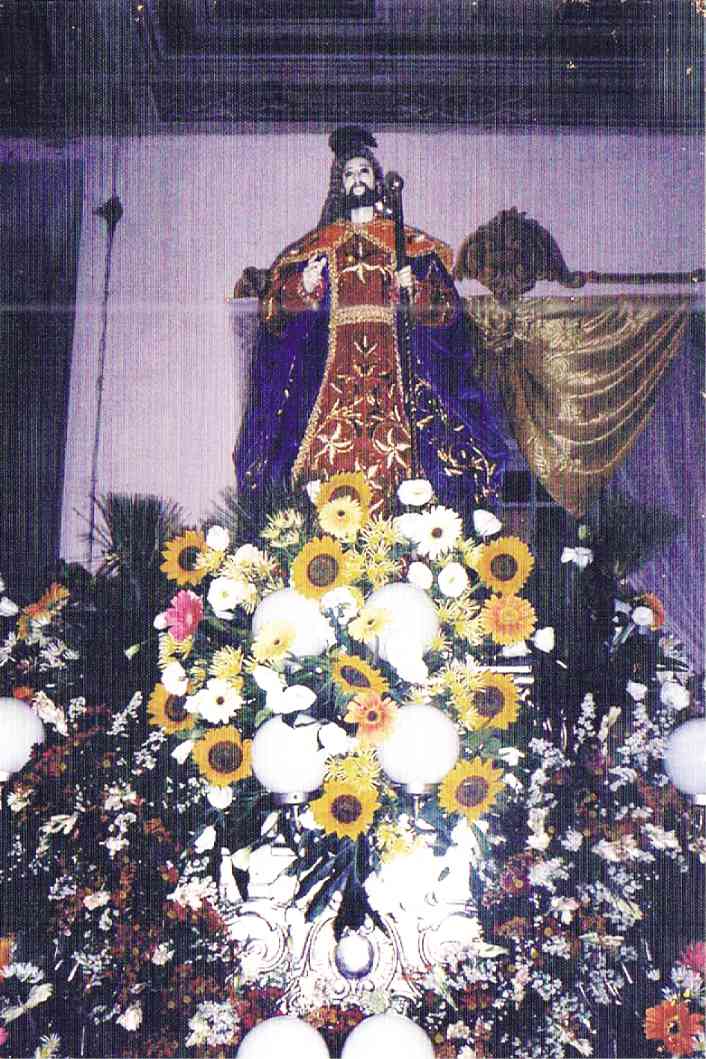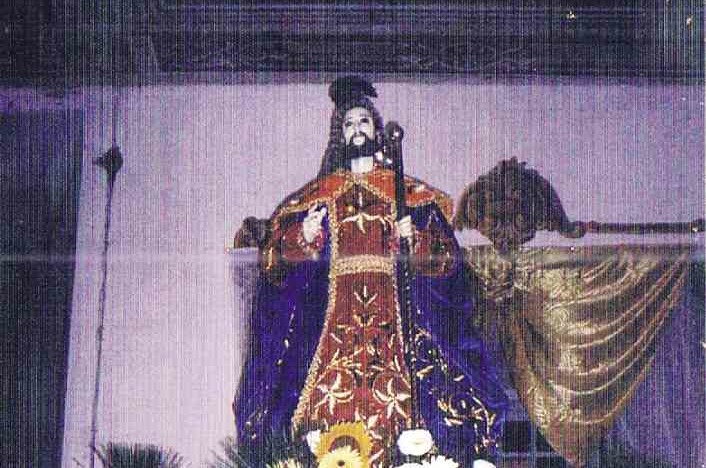
Last night I dreamt I went—not to Manderley—but to Betis again, the fiesta and holiday haunts of my youth and childhood and my father’s hometown where, like Manderley, my grandfather’s house is “no more… ours no longer.”
At times looming larger than life, at other times dissipating like morning mist in the harsh light of everyday reality, memories of my grandfather’s Betis home float wraithlike, as ghosts from the past.
In the dim light of faulty recall, and through the idealized prism of advancing years acutely aware of time slipping away, I can still see the 19th-century bahay-na-bato, its stone front steps leading up to the wooden upper story living areas.
Branches of a giant chico tree loomed menacingly over the rail-enclosed balcony, occasionally dropping a fruit or two with a thud in the dead of night, confirming our childhood fears that indeed, kapres inhabited the tree and the nearby towering sugar mill. It was there we sat, my cousins and I, whiling away lazy afternoons when we outgrew childish pranks and games.
There I learned to love that magic time between day and night, the melancholy of twilight, and discovered the first stirrings of puppy love.
The balcony opens out, through double doors and carved lintel of Agnus Dei (Lamb of God) to a vast living room. To one side stood my grandfather’s bedroom, perpetually dimly lit with flickering oil lamps and votive candles.
Velvet finery
There the family santo—Apo Tiago, St. James the Apostle— was kept in its glass case, dressed in simple cotton garment for everyday wear, until metamorphosed for delivery to the Betis church, elegant in his gold-embroidered velvet finery, wig in place, cheeks rouged to soften the pallor of its ivory face, and picked up by several groups of marching bands for town fiestas, Holy Week observances, and/or other special occasions.
Like the year waning into shorter days and longer nights, we of the twilight generation of Betis Davids rarely “rage, rage against the dying of the light,” but rather “go gentle into that good night,” notwithstanding Dylan Thomas’s poetic counsel to his father.
Once in a great while, however, we come face to face with a facet of the past—a moment of truth, as it were—that brings together present reality with fragments of ourselves that we have long lost, like pieces of a puzzle recombining to form a whole picture.
One such occasion came for me more than a decade ago. On the eve of the of Betis district fiesta, when a handful of us cousins, remnants of the David clan from the line of my paternal grandfather Pedro Lampa David, came together for a brief, and largely impromptu, family reunion.
The group included my London-based sister Marita, who was in town for the holidays with her Canadian-born husband and their daughter Teresa, and numerous US-based cousins, home for the holidays and the town fiesta, and to attend the wedding of a nephew. As well, there were those of us who, like me, were living in Manila or in Pampanga, many of us no longer carrying the David family name by virtue of marriage.
The reunion was held at the home of a cousin who, through the years, has maintained her residence in Betis, at precisely the spot where our grandfather’s house once stood. The ancestral home is long gone, as are the once extensive family land holdings.
Erratic memories
Only erratic memories remain, along with larger-than-life perceptions of the elegant four-foot-tall ivory and wood image of the town patron saint—Apo Tiago—around which the remaining generations of our branch of Betis Davids found an inspiring rallying point.
We are all, they say, a product of nature and nurture. Nature is what we are born with—the genes we inherit from our parents and ancestors. Nurture is the superimposed layer upon layer of post-natal forces that help shape us as individuals— the milieu and culture into which we are born and raised, and the attitudes, views and influences that color our world view and continue to evolve and transform us through the years.
In our instinctive search for individual identity, we forget— and sometimes deliberately reject—the roots of our “nurture” which, paradoxically, has the power to draw us back precisely to the point of our true identity as an individual.
Spared from the devastation of Mount Pinatubo in 1991, the municipality of Betis adjoins Bacolor, a town so totally devastated by lahar, only the church steeple and a reconstructed portion remains today as a reminder of where the town once stood.
The fact that the lahar flows stopped just short of Betis is a miracle attributed by townsfolk to the intervention and protection of the town’s patron saint, Apo Tiago. To this day, people from neighboring towns and districts borrow the image from my cousin Violeta—for years the family custodian—whenever any of the nearby towns or villages find themselves threatened by floods, or any other natural calamities.
Whether the statue, imported from Spain, was acquired by my grandfather, or by his father before him, is a matter of conjecture among us. But my generation of Davids and those immediately after us, grew up with the familiar sight of the image housed in its glass case in my grandfather’s darkened bedroom.
Ritual
Whether we were there for the three-day town fiesta, or the weeklong Semana Santa (Holy Week), it was the first place we headed upon arrival, to touch the hand of the image upon our foreheads, even before we greeted our grandfather and touched his hand to our forehead.
Preparing Apo Tiago for his church sojourn and the religious procession that followed, and setting him upon the gilded carrosa, decked with flowers and lights, were part of the ritual of my growing up years, an intimate portion of our life, upbringing and family traditions.
Thus it was with a rediscovered sense of belonging and oneness that, a decade ago, our assembled kith and kin awaited the marching bands that were to fetch the image from my cousin’s house and escort it to church.
Listed as a national heritage, the St. James Church of Betis is one of the oldest in the country and the only one with wooden floors. Built by the Agustinians between 1610 and1670 in typical mission architecture, with frescoes on the ceiling, murals on the walls, and carved, gilded wooden altars and pillars, the Baroque church is also one of the country’s most beautiful.
I have often watched with a tinge of nostalgia those Italian, and/or Spanish movies depicting religious processions wending their way through narrow, winding streets, “oompah-pah” brass bands setting the funereal pace, and masses of candle-carrying devotees following hard at the heels of saintly images borne aloft on carriages, or upon the shoulders of devotees.
These are scenes straight out of my childhood, and on that eve of the San Miguel district fiesta, reality and memory came alive in what I can only describe as a “moment of grace” when we, as remnants of a now scattered branch of a Betis David clan, candles lit in the fading light, joined the marching band and the “Coraldal” dancers in escorting our Apo Tiago to the Betis church. Faith in action, glorifying the Creator through an earthly ritual.
Every few meters, the procession stopped to allow the dancers to express their exhuberance and joy before the image of St. James in a mock routine of clashing swords and shields—a reference to the mythical James who fought and triumphed over the Moors.
All along the route, people lined the streets, greeting the approach of Apo Tiago with awed reverence, or a burst of firecracker salute! It was as I remember the event from childhood, and yet different from what I remember! I was told that my memory regarding the “Coraldal” dancers was flawed, because when we were kids, the dancers were elderly, and not the young men who perform the “Coraldal” today.
Perhaps it is only in the twilight of our years that we can appreciate—or be reinvigorated—by our half-forgotten beginnings. But I do hope that one day soon, my own children (and grandchildren) will find the time—and the inclination—to join me on a visit to Betis on the eve of a town fiesta to discover for themselves an undying family legacy that will outlive us and our generation, as it did my father and grandfather before him.













































